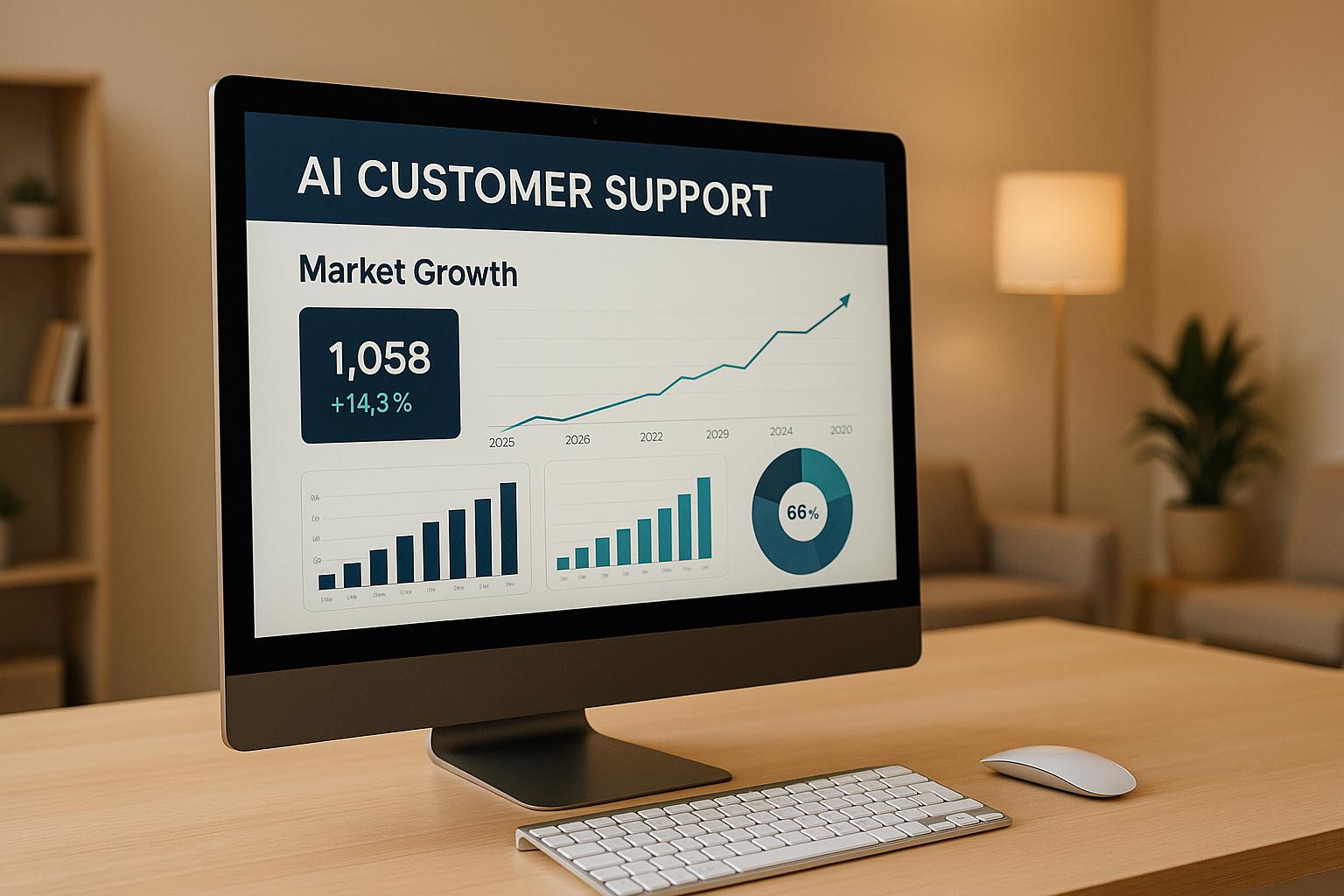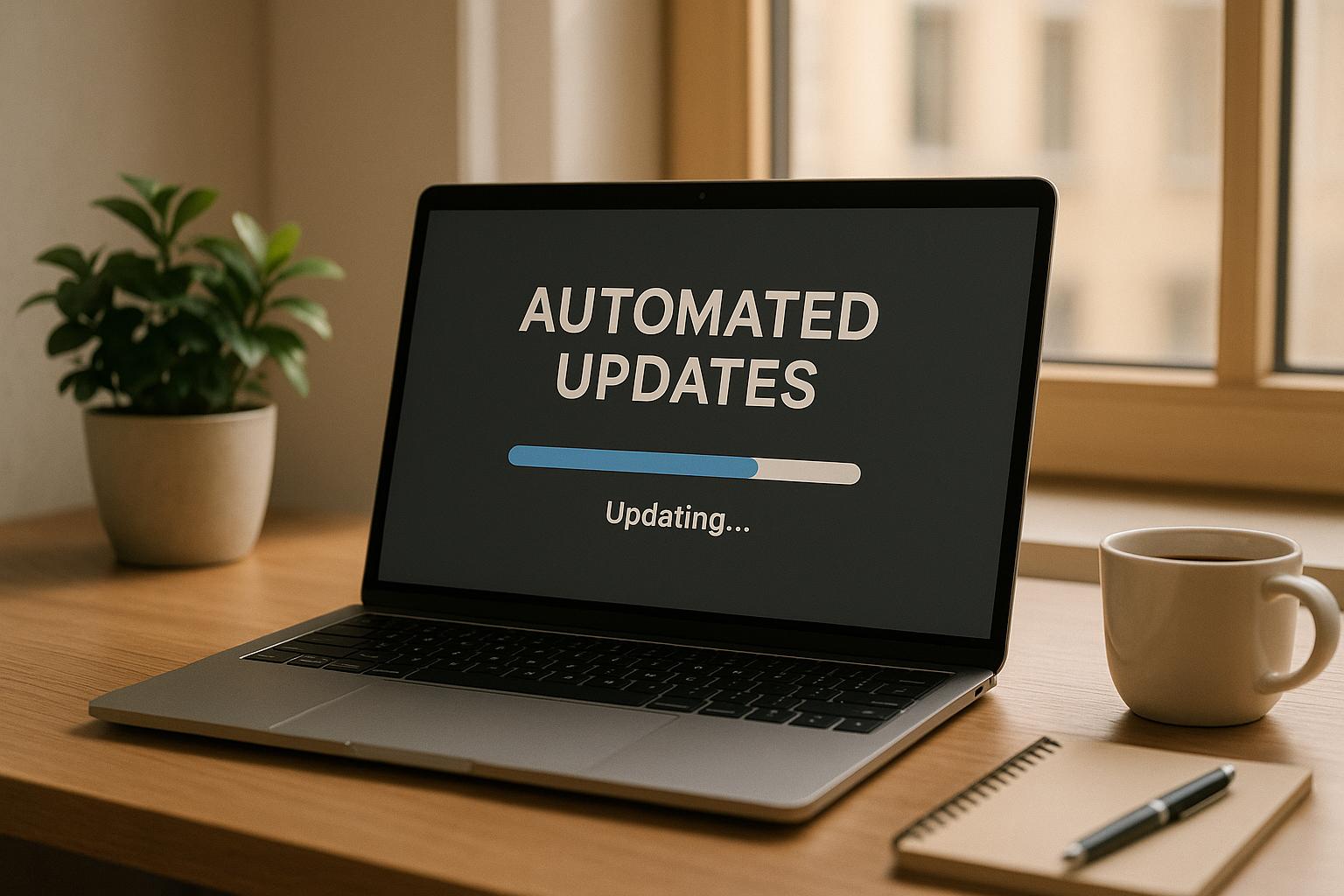AI tools and AI agents are two different approaches to using artificial intelligence in business operations:
- AI Tools: Focused on specific tasks like text generation or data analysis. They require user input and follow predefined rules.
- AI Agents: Operate autonomously, managing complex workflows, learning from interactions, and making decisions independently.
Quick Comparison
| Feature | AI Tools | AI Agents |
|---|---|---|
| Autonomy | Requires user input | Works independently |
| Learning | Pre-programmed, no learning | Learns and adapts over time |
| Task Scope | Single, specific tasks | Handles multi-step workflows |
| Decision Making | Follows set rules | Dynamic, based on data analysis |
| Setup Complexity | Simple | More complex |
| Resource Requirements | Lower computational needs | Higher computational needs |
| Context Awareness | Task-specific focus | Maintains context across tasks |
Which to choose?
- Use AI tools for straightforward, repetitive tasks like content creation or customer service.
- Opt for AI agents for complex, multi-step processes that need autonomy and adaptability.
Deciding depends on your goals, task complexity, and budget.
AI Tools: Basic Functions
AI tools are software designed to automate tasks using artificial intelligence.
Main Features of AI Tools
AI tools are built to process user inputs and provide outputs based on their training. Here are some key features:
- Task-specific design: Tailored for functions like text generation or data analysis
- Requires clear instructions and oversight: Ensures proper functionality
- Consistent performance: Delivers reliable results
- Easy integration: Works well with existing systems
- Scalable: Manages increasing workloads effectively
These capabilities make them useful across many industries.
Popular AI Tool Types
AI tools are used in various sectors to address unique challenges:
| Industry | Company | Application | Results |
|---|---|---|---|
| Finance | Intuit | Customer interaction system | 730 million AI-driven interactions yearly, 58 billion ML predictions daily |
| Media | The Washington Post | Heliograf content tool | Boosted news report production and content output |
| Banking | Bank of America | Erica virtual assistant | Enhanced customer service efficiency |
| Manufacturing | Siemens | Predictive maintenance | Lowered unexpected machine failures and cut maintenance costs |
These examples highlight their flexibility and impact.
Where to Use AI Tools
AI tools are perfect for handling repetitive tasks. According to McKinsey, 67% of millennials expect real-time customer service, underlining their role in improving customer engagement.
Some common uses include:
- Customer Service: Managing routine inquiries and ensuring consistent interactions
- Content Creation: Producing reports and updates
- Data Analysis: Processing large datasets to uncover insights
- Quality Control: Tracking and maintaining product standards
- Process Automation: Simplifying and optimizing workflows
When choosing AI tools, businesses should consider their goals, specific needs, and how well the tools integrate with existing systems to achieve the best results.
AI Agents: Advanced Systems
AI agents are self-operating systems designed to make decisions and manage complex tasks without constant human input. Unlike the task-specific AI tools mentioned earlier, these systems can perceive their surroundings, analyze data, and take action independently.
Key Elements of AI Agents
What sets AI agents apart is their ability to adapt and function autonomously. Here are some of their main features:
| Capability | Description | Impact |
|---|---|---|
| Autonomous Decision-Making | Makes real-time choices based on data analysis | Minimizes the need for human involvement |
| Contextual Learning | Builds on past interactions to improve outcomes | Enhances efficiency over time |
| Problem-Solving | Anticipates and resolves issues proactively | Avoids disruptions |
| Task Coordination | Manages multiple tasks at once | Simplifies complex workflows |
These features allow AI agents to deliver measurable benefits across various industries.
AI Agents in Action
Businesses are using AI agents to revolutionize their processes. For instance, Siemens employs AI in manufacturing to monitor equipment in real time, predicting and preventing failures.
"The future belongs to those who can harness the power of autonomous agents while navigating the ethical complexities they bring. It's not just about building smarter machines, but about creating a smarter, more equitable world." - Dr. Aisha Patel, AI Ethics Researcher
Here’s how AI agents are making an impact across industries:
- Financial Services: JPMorgan Chase's COIN platform automates the analysis of commercial loan agreements, saving 360,000 hours of legal work each year.
- Healthcare: Google's AI diagnostic system has achieved an 85.4% sensitivity rate in detecting skin cancer, outperforming traditional dermatologists.
- E-commerce: Amazon’s recommendation engine, powered by AI agents, generates 35% of the company’s total sales through personalized product suggestions.
AI Agents vs Tools: Key Differences
The advanced capabilities of AI agents highlight their distinction from traditional AI tools. Here's a closer look:
| Aspect | AI Agents | AI Tools |
|---|---|---|
| Operation Mode | Self-directed decision-making | Requires manual input |
| Learning Ability | Continuously learns and adapts | Pre-programmed behavior |
| Task Scope | Handles diverse, multi-layered tasks | Focused on specific tasks |
| User Interaction | Engages proactively | Reacts to user commands |
| Integration | Complex but versatile | Simple and limited |
The market for AI agents is projected to grow from $5.1 billion in 2024 to $47.1 billion by 2030, showcasing their increasing role in reshaping industries.
sbb-itb-212c9ea
Direct Comparison: Tools vs Agents
Comparison Chart
Here's a side-by-side look at the key traits of AI tools and agents to help with decision-making:
| Characteristic | AI Tools | AI Agents |
|---|---|---|
| Autonomy Level | Needs manual triggers and clear instructions | Works independently without constant input |
| Learning Capability | Limited programming, minimal learning | Learns and improves through interactions |
| Task Complexity | Built for specific, single tasks | Manages multiple, interconnected tasks |
| Decision Making | Follows pre-set rules | Adjusts dynamically to changing conditions |
| Resource Requirements | Lower computational needs | Requires more computing power |
| Setup Complexity | Simple to set up | More complex to implement |
| Context Awareness | Task-specific focus | Maintains context across various processes |
| Response Time | Executes commands instantly | Anticipates and solves issues proactively |
While the chart highlights technical differences, it's equally important to weigh the practical pros and cons of each.
Benefits and Limitations
"AI agents are not only a way to get more value for people but are going to be a paradigm shift in terms of how work gets done."
– Ece Kamar, managing director of Microsoft's AI Frontiers Lab
Here's a closer look at the real-world advantages and challenges of these options.
AI Tools Advantages:
- Quick execution with minimal setup
- Clear control and accountability
- Lower resource demands
- Easily integrates into existing workflows
- Predictable outcomes based on specific rules
AI Tools Challenges:
- Limited to predefined tasks
- No capacity for self-improvement or learning
- Needs constant human oversight
- Unable to adapt to changing environments
- Performance drops significantly for tasks exceeding 4 hours
AI Agents Advantages:
- Operates largely without supervision
- Learns and improves through usage
- Handles complex, multi-step workflows
- Proactively addresses issues
- Adjusts to dynamic situations
AI Agents Challenges:
- Requires more complex setup and implementation
- Needs higher computational power
- Harder to monitor and predict behavior
- Raises ethical concerns about autonomy
- Struggles with very long task sequences
"Think of agents as the new apps for an AI-powered world."
– Jared Spataro, Microsoft's chief marketing officer for AI at Work
Choosing between AI tools and agents depends on what your organization needs and the complexity of the tasks. This comparison helps set realistic expectations and guides you toward the best solution.
Making the Right Choice
Decision Points
When deciding between AI tools and agents, consider a few critical factors. Since 2020, AI infrastructure costs have fallen by 70%, making these technologies more accessible than ever.
- Cost: Basic AI tools typically range from $50 to $500 per month, while advanced AI agents can cost $500 to over $2,000 per month. For consulting, expect to pay around $200–$350 per hour.
- Task Complexity: For straightforward tasks like content creation or data analysis, AI tools are fast and efficient. However, for system-wide automation that handles multiple processes, AI agents offer better long-term results.
- Implementation Timeline: AI tools are quick to integrate, while AI agents may take longer to set up but provide deeper automation. It’s recommended to track performance for 60–90 days after implementation.
These factors can help you decide which solution aligns with your goals.
Best Uses for AI Tools
AI tools are ideal for tasks requiring specific, predictable outcomes. Here are some examples:
- Marketing and Sales: According to a Duke University study, AI tools can increase sales by 6.2%, improve customer satisfaction by 7%, and reduce marketing costs by 7.2%.
- Content Operations: Businesses can see measurable improvements, like a 7.2% reduction in marketing costs, through AI-driven content strategies.
Best Uses for AI Agents
AI agents shine in environments requiring complex, multi-step automation. Here’s how they’re being used across industries:
- Customer Service: Telecom Italia (TIM) improved efficiency by 20% using a Google-powered voice agent.
- Retail Operations: Woolworths implemented Gemini-powered AI agents for personalized promotions, real-time interaction summaries, and enhanced support for service representatives.
- Financial Services: HDFC ERGO leveraged Vertex AI agents to assist insurance agents, streamline customer onboarding, and provide context-aware support.
- Energy Sector: AES achieved a 99% reduction in audit costs by automating safety inspections and compliance processes.
"AI costs have been dropping significantly, with the cost per unit of AI work decreasing and capabilities improving rapidly." - Rogers Jeffrey Leo John, Co-founder and CTO of DataChat
For the best results, start with high-volume, low-complexity tasks and review performance weekly.
Conclusion
The analysis highlights the distinct functions of AI tools and agents in today's operations. While AI tools are designed for specific tasks with clear parameters, AI agents bring autonomous capabilities to streamline complex business processes.
We’ve explored how AI tools excel at delivering precise, task-focused results, whereas AI agents are more suited for managing intricate operations that require independent decision-making. Tools provide immediate, task-specific benefits, while agents handle broader, more sophisticated workflows.
As advancements in technology continue, both tools and agents will become even more capable. To make the best choice, consider your specific requirements, the complexity of your processes, and your long-term automation objectives. These insights can help you make a strategic decision to improve efficiency.
Discover a range of AI solutions on the AI Apps platform, offering over 1,000 verified tools tailored to meet your needs.



